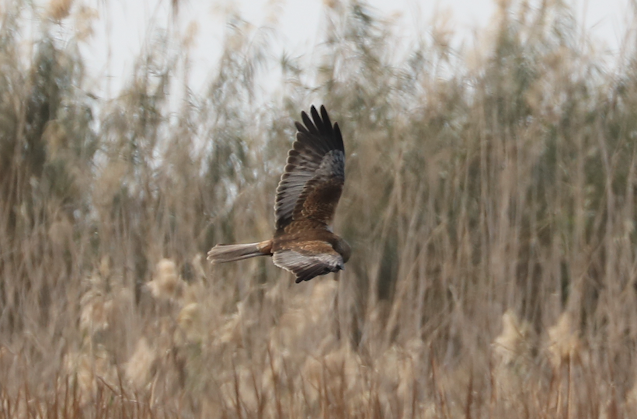31. The (Western) Marsh Harrier
NB. Remember to click on the photographs to enlarge the image.
The Marsh Harrier is the largest of the European Harriers and, in my experience, is the one that is most commonly seen here in Cyprus. It is a little larger than the Common Buzzard, with longer and slightly narrower wings.
A juvenile Marsh Harrier, newly arrived
As its name suggests it is most frequently seen on low-lying marshy land, reed beds and coastal farmland.
Scanning for likely prey
It is a passage migrant in Cyprus, most commonly seen in Spring (March - May) and in Autumn (August - November), generally spending the winter in Africa. However there are usually individuals (particularly juveniles) that will be resident here all year round, and there are very few occasions when visiting Akrotiri Marsh that I have not seen one or more of them.
 |
The impressive wingspan and underwing colouring |
This winter there has been a juvenile bird resident in the Ayia Varvara valley, and it is still occasionally seen when the hunters aren't around.
Landing Approach
The Marsh Harrier has a very distinct flight pattern, most frequently seen skimming low over the reeds as it searches for prey in clearings and open marshy areas.
Male harrier gliding low across the reedbed
It soars with its wings raised in a shallow V position. It feeds mainly on small mammals, birds and larger insects. It nests within large areas of tall reedbeds.
Male Harrier coming in for a kill The juvenile Marsh Harrier has very a dark brown body and wings but with a goldish-brown crown and throat.
Typical colouring and shallow V-wing position of the hunting juvenile Marsh Harrier The adult female Harrier is also largely dark brown but with a creamy-white crown and throat, often with white "headlights" on the forewing that make identification fairly easy.
 |
Typical female colouring |
The male adults has distinctly black wing tips and a uniformly pale blue-grey tail. The head and breast can be pale yellowish/white and the underside of the wings can be clearly tri-coloured (black tips, grey-white primaries and mid-brown coverts).
Nearly time to roost for the night
--------------- xxx-----------
All photos and text by Trevor Fordham.
Note that copies of any photos in 'Trevor's Tweets' are available from me on request.
13 February 2023











Stunning photographs Trevor. Thank you.
ReplyDeleteTrever, those pictures are amazing and thank you for the knowledge. Brilliant!
ReplyDelete